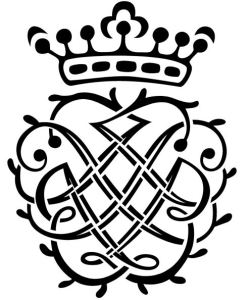Buxtehude: Abendmusiken
Vox Luminis, Ensemble Masques, Lionel Meunier
Alpha: ALPHA287. 85’17

Gott hilf mir, denn das Wasser geht mir bis an die Seele, BuxWV 34
Befiehl dem Engel, dass er komm, BuxWV 10
Jesu, meine Freude, BuxWV 60
Herzlich lieb hab ich dich, o Herr, BuxWV 41
Jesu, meines lebens leben, BuxWV 62
Trio Sonatas, BuxWV 255, 267, and 272
Although the CD publicity and Peter Wollny’s programme essay credit Dietrich Buxtehude with the Lübeck Abendmusik, the famous series of Thursday early evening concerts during the five weeks leading up to Christmas were in fact founded by Buxtehude’s predecessor as organist of the Marienkirche, Franz Tunder. He died in 1667, so the roots of the evening entertainment funded by local businessmen, and free to all-comers, are well before the music heard on the recording, most of which comes from Buxtehude’s later years. As organist, rather than Kantor, of the Marienkirche, Buxtehude was not required to compose music for the weekly liturgy, so he was able to devote more time to his compositions, independent of the pressure of service writing. This resulted in a magnificent series of vocal, choral and instrumental works, much of which is still not as well known as his highly influential organ music. It was these Abendmusik concerts that attracted the young Bach and Handel to Lübeck, as well as the prospect of succeeding Buxtehude, even with the requirement to marry his sole unmarried daughter, by then considerably older than either of them. Incidentally, Buxtehude had married his predecessor’s daughter, as had Tunder and many other generations of Marienkirche organists.
This impressive recording helps to reset that balance with a well-chosen sequence of vocal and instrumental pieces, including three of his beautifully expressive Trio Sonatas. Although not specifically intended for service use, Buxtehude’s cantatas offer an insight into the Pietist sentiments of 17th-century Lübeck, with an exquisitely profound underlying sensitivity and sensuousness.
The three Trio Sonatas make prominent use of the violin, here beautifully played by Sophie Gent alongside the sensitive playing of Mélisande Corriveau, viola da gamba, both supported by Olivier Fortin on organ and harpsichord. The D major Sonata (BuxWV 267) is focussed on the sound of Mélisande Corriveau’s, viola da gamba, and a violone, played by Benoît Vanden Bemden, both with extended solo passages in the central section. These are exquisite examples of the influential stylus phantasticus at its musical peak, with its dramatic changes of pulse and mood – like mini-operas. In the cantatas, the second violin of Tuomi Suni joins in the instrumental texture.
The singing of Vox Luminis is, as usual, outstanding. They catch the mood of Buxtehude’s music perfectly, their pure and unforced voices being ideal to express the intense emotions behind the text. The four sopranos (Sara Jäggi, Zsuzsi Tóth, Stefanie True, and Caroline Weynants) are particularly prominent in most of the pieces and fulfil their role beautifully. Caroline Weynants’s evocative Gute Nacht, O Wesen is one of the highlights of the whole recording. Bass Sebastian Myrus also impresses in a couple of the cantatas, most notably at the very start of the CD. Lionel Meunier directs from within the choir, singing bass. His interpretations are always spot-on, blending sensitivity with superb choral intonation and a sense of real consort amongst all the musicians.
The only slight quibble is the sound of the little organ. As the Marienkirche organist, rather than Kantor, Buxtehude’s instrumental and choral music would have been performed at the liturgical west end of the high church, using the monumental church organ as both continuo and solo instrument. The sound of an 8′ Principal stop for continue (rather than the weedy little Gedackts of box organs) is rarely heard nowadays, but it adds an impressibly solid, and authentic, timbre to the accompaniments. I can forgive them not including any solo organ music on this CD, at it would have outbalanced the sensitivity of the choral and instrumental pieces.
